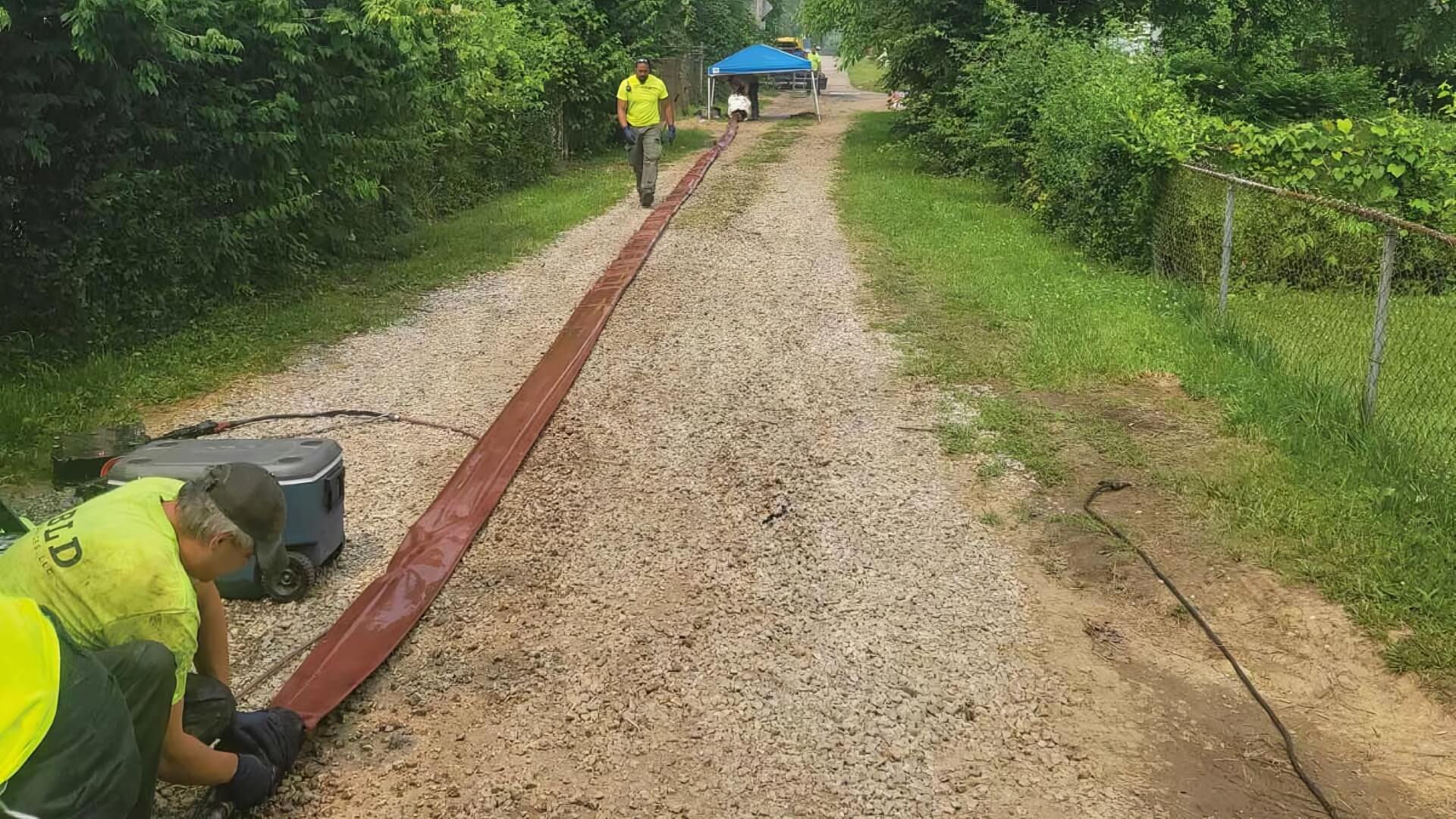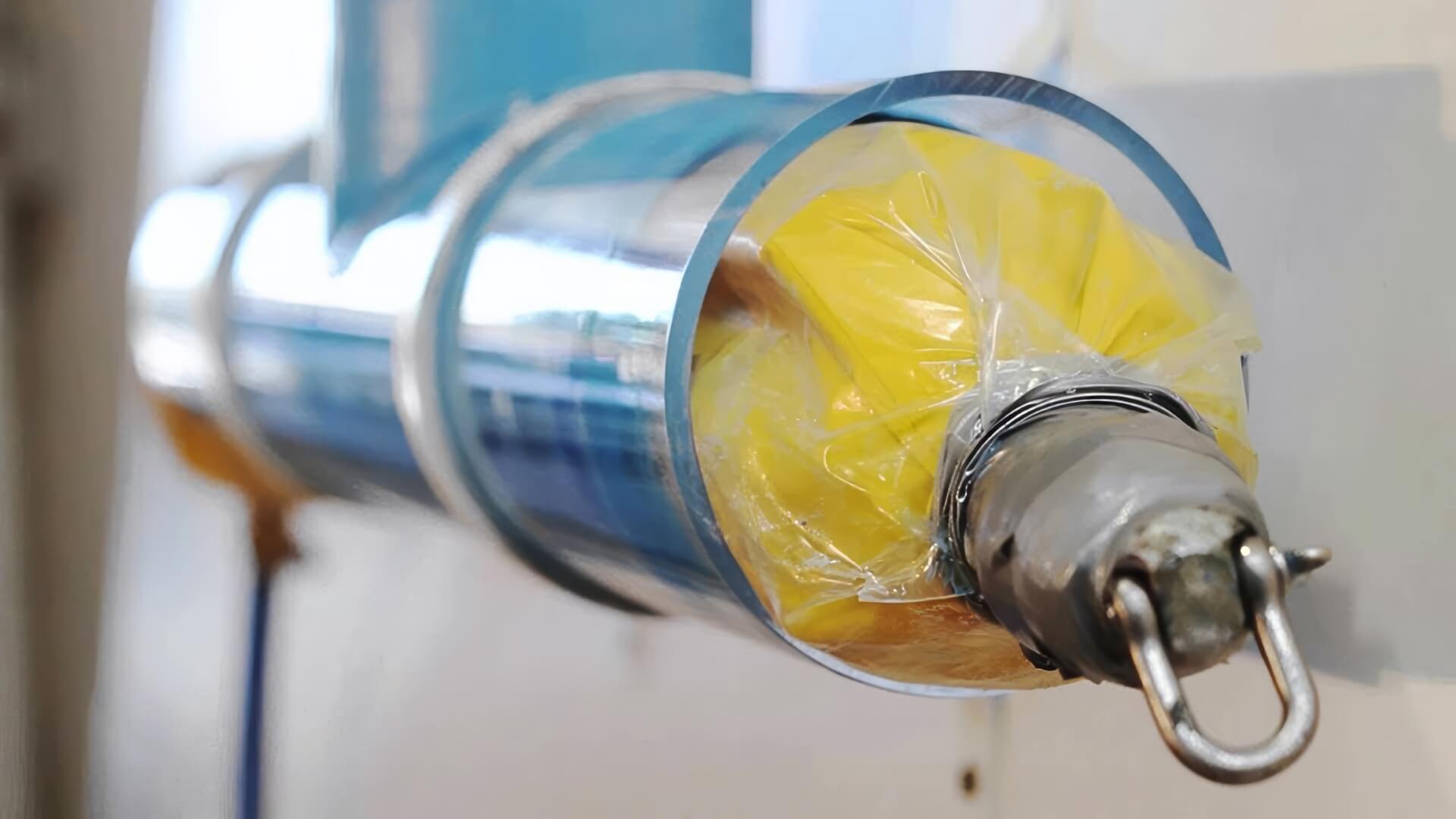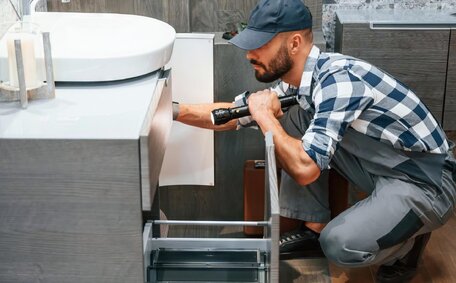Recognizing Signs of a Plumbing Emergency
It’s crucial to identify the signs of emergency plumbing issues promptly to minimise damage and disruption. Some of the most common indications that require immediate attention include:
- Burst pipes or water spurting from pipes - This can lead to severe flooding and significant damage caused if not addressed right away.
- Low or no water pressure - This could mean there is a major leak or break in your water heater or somewhere in your plumbing system.
- Backed up sewage - Sewage backing up into sinks, tubs or toilets can cause unsanitary conditions and water damage.
- Gas leaks - If you smell gas or hear a hissing noise from gas appliances, evacuate immediately and call the gas company.
- No hot water - A lack of hot water could indicate a serious issue with your unit.
- Leaking taps, ceiling drips, wall wetness or standing water typically denote ruptured pipes.
Quickly recognizing plumbing emergencies can help reduce damage significantly. Knowledge of your main water shut-off valve location enables prompt action to halt water supply when necessary.
Shutting Off the Water Supply
In a plumbing crisis, swiftly shutting off the water supply is essential to prevent more damage to your home or commercial plumbing. Here’s how:
- Locate the main shut-off valve, often near the water meter or hot water system.
- To turn off the water valve, simply rotate it clockwise until it stops. The valve is typically horizontal but may be vertical in some cases.
- Turning off the main water supply halts water flow to all fixtures and appliances in your home. Additionally, you can isolate water flow to specific areas by shutting off valves under sinks and toilets.
- Make sure all your household members know where the off main valve is located and how to turn it off.
- Once the water is off, call professional emergency plumbers immediately to inspect and repair the problem.
- Turn the water back on slowly once the plumber has completed the repair and checked for leaks.
Quickly closing your water supply when detecting a leak can curtail damage until expert help arrives. Equipping yourself with essential tools and plumbing know-how grants you immediate control as you wait for services.
Locating and Turning Off Gas Valves
Knowing how to shut off your gas supply is a critical safety step during any gas leak or plumbing emergency. Here are some tips, relevant even for residents in Byron Bay, for locating and turning off gas valves in your home or building:
- Find your water main and gas shut-off valve, usually located on the respective metres outside or in the utility room/basement.
- Make sure you have an adjustable wrench or gas valve key ready before attempting to turn off the gas.
- Turn the valve a quarter turn in either direction to ensure it does not seize up when you need it.
- When ready to shut off gas, use the wrench to turn the valve perpendicular to the pipe (valve will be crosswise to pipe) until it stops.
- Check that your pilot lights are out and appliances have stopped running to confirm gas interruption.
- Summon your emergency plumber or call the gas company to report any leak and request service restoration after repairs are completed.
Besides the main valve, individual appliances like water heaters and ovens may have separate valves behind or underneath them. Only attempt to turn off gas yourself if it is safe to do so, and particularly be aware when you are near gas lines as gas leaks can be extremely hazardous.
Isolating Electricity in Affected Areas
If a plumbing disaster involves water damage or leaks, it’s critical to disconnect electricity in impacted areas to avoid electrical risks. Follow these steps to safely cut off power:
- Locate your main circuit breaker or fuse box. This is usually found in the garage, utility room, basement or a closet.
- Always have a dry hand and stand on an insulating surface like a wooden board or rubber mat when accessing the breaker box, as water conducts electricity.
- Switch the main breaker to the 'Off’ position to disconnect power to the entire home.
- De-energize the exact location of potential danger by flipping the corresponding breaker switches individually.
- Clearly label or lock off the tripped breakers for safety.
- Only attempt to switch off power if it is safe to do so. Call an electrician if you have any concerns.
Safe disconnection of electricity is a preventative move against potential shocks or electrocution during plumbing repairs. Always be mindful near wet electrical devices.
This is usually found in the garage, utility room, basement or a closet.Always have a dry hand and stand on an insulating surface like a wooden board or rubber mat when accessing the breaker box, as water conducts electricity.Switch the main breaker to the 'Off’ position to disconnect power to the entire home.De-energize the exact location of potential danger by flipping the corresponding breaker switches individually.Assessing the Situation and Damage
Taking a few minutes to assess a small plumbing issue properly during the plumbing emergency can provide critical information to help stop further damage. Here are some proactive steps to take when assessing the situation initially:
- Record the exact location and time of the water leak discovery, including any atypical noises, odours, or visual signs.
- Do a thorough walkthrough of the property to identify all affected areas and turn off water wherever necessary. Check under sinks, behind walls and above ceilings.
- Take photos and videos of any water damage, pipe bursts, flooding, etc to show the plumber.
- Turn off any taps or valves feeding the leak if safe to do so.
- Check if any electrical equipment has gotten wet or if there are any hazards.
- Look at neighbouring properties for shared pipe or drainage systems that may be contributing.
- Monitor the leak source, drainage points and flow rate if it is not stoppable.
- Call your local plumber to report your plumbing emergency and describe what you found for prompt diagnosis and repair.
A thorough assessment and communication of the issue, supported by relevant tools, ensures that your plumber can resolve the problem efficiently.
Unclogging Blocked Drains
Blocked drains call for urgent action to prevent water damage and sewage backup. Before professional attention, employ a plunger or drain snake as a stop-gap measure to clear the obstruction.
For sink drains, even outside of business hours, fill the basin with a few inches of water before plunging to create a seal.
Take care not to scratch your pipes. Repeat plunging or snaking until the water starts draining again.
While a plunger or snake can provide temporary relief, Blocked drains often have deeper obstructions or more serious issues that can wait for professional drain cleaning. Call a plumber as soon possible to manage the situation, as sewage backups can elevate risk levels and lead to costly repairs if ignored.
Clearing Clogged Toilets
Your toilet, when clogged, is a typical plumbing emergency that demands swift action to clear the block and circumvent overflows. Start by taking action to turn off your water supply valve behind the toilet to prevent further flooding.
Observe water levels dropping as you use a toilet plunger to remove blockages. Flush to check if the obstruction has been cleared post-plunging.
Place the plunger over the drain opening and plunge vigorously 10-15 times, ensuring a tight seal. You can also try a closet auger, or 'toilet snake’, inserted 3-6 feet into the toilet drain to break up debris.
For persistent blockages, pour 1⁄4-1⁄2 cup of baking soda followed by 1-2 cups of vinegar into the toilet. Let the mixture react for 10-15 minutes, then flush with hot water.
Repeat if needed. Caution should be taken to protect against splashing or overflow.
While a plunger or auger might solve partial clogs, significant blockages or sewage overflows necessitate a professional plumber’s expertise to rectify the main drain issue.
Handling Sewage Backups
Sewage backups are a serious health hazard and require immediate action. In case of wastewater overflow from toilets, sinks, bathtubs, or floor drains, immediate steps are required:
- Wear waterproof boots, gloves, goggles and protective clothing to protect your health when dealing with sewage spillage.
- Cordon off the area to prevent slips or falls.
- Try to stop the backup source and shut off water supply valves if possible.
- Contact your local professional immediately to inspect and clear blockages.
- Clean and disinfect all surfaces contaminated by sewage thoroughly using bleach solution.
- Discard any porous items that cannot be disinfected properly.
- Call a restoration company if needed - what plumbing actions should you take next to help dry out affected walls and flooring.
Sewage backups pose a health risk; therefore, avoid contact and leave diagnosis and resolution to professionals. Act immediately if sewage spills into your residence.
Sewage backups are a serious health hazard and require immediate action.
mop up leaking water, and remove or elevate furnishings and electronics that might affect your belongings. Inspect ceilings below and walls around the leak for concealed damage, and punch small holes at floor level to allow drainage. Burst pipes can quickly overwhelm homes with flooding so make emergency calls to a plumber for repairs.If faced with unmanageable water accumulation, seek plumber assistance immediately. Deactivate electricity in damp zones to reduce risks, record evidence for insurance, and dry all items thoroughly before reelectrifying.
Responding to Gas Leaks
In the event of a gas leak, it’s crucial not to wait for the situation to deteriorate; these leaks pose extreme hazards and require urgent contact with professional plumbers. Avoid using a phone or mobile device near the leak. Prevent others from entering the affected area until gas technicians have resolved the issue.
Call emergency services if the leak is inside a building, or contact your gas provider to report an external leak. Even minor gas leaks can escalate rapidly, so swift action is critical for your safety.
Calling Professional Help vs DIY Solutions
In a plumbing emergency, resist quick-fix temptations as many issues demand immediate, expert care. Improper DIY can exacerbate problems or lead to injuries.
In the event of substantial emergencies, it’s best to promptly call our skilled team at Padstow Plumbing. Our experienced, licenced plumbers are available 24/7 to respond rapidly and correctly diagnose issues. By leveraging our expertise in plumbing service, you can prevent extensive property damage or personal risks.
We have the proper tools, protective equipment, and training to address emergencies that may be hazardous for homeowners.
Basic troubleshooting, such as closing water valves or alleviating minor drain clogs, can be carried out while awaiting the arrival of the plumber. Don’t hesitate to email or call Padstow Plumbing if you have any doubts - we are happy to provide guidance and our rates are reasonable.
However, complex plumbing system repairs should be carried out by our professional team.
Having the Right Tools for Plumbing Emergencies
Being prepared with the proper tools on hand can make a big difference in how well you can respond to common plumbing emergencies until professional help arrives. Your essential plumbing kit should include items such as an adjustable pipe wrench to tighten or loosen fittings, a plunger to clear clogs, a drain auger or snake to remove deeper blockages, bucket to catch water, towels or rags, flashlights, rubber gloves, eye protection, and a multi-purpose utility knife. Taking the time to assemble a plumbing toolkit means you’ll have the key equipment ready to handle various plumbing situations, limit water damage, and make temporary repairs while waiting for your plumber.
Having a basic plumbing toolkit ready, including the mains tap key, allows you to take immediate action when needed. A wet/dry vacuum is also useful for cleaning up small water spills. Make sure to store your emergency tools during plumbing mishaps in an easily accessible location.
Preventing and Preparing for Future Plumbing Issues
Preventive measures against plumbing crises can avert considerable inconvenience and expense. Here are strategies to proactively circumvent future plumbing complications:
- Avoid pouring fats, oils and harsh chemicals down drains that can build up and cause clogs.
- Insulate exposed pipes to protect against freezing and bursts during cold weather.
- Update old plumbing fixtures and appliances that are more prone to leaks as they age.
- Learn how to turn off main water valve so you can take quick action in an emergency.
- Keep a plumbing toolkit on hand with basic tools and supplies for temporary fixes.
- Know the location of all water, gas and electrical shut-offs for your plumbing system.
Contact Padstow Plumbing today to schedule annual check-ups and ensure your plumbing stays in reliable working order.
Preventive measures against plumbing crises can avert considerable inconvenience and expense.






